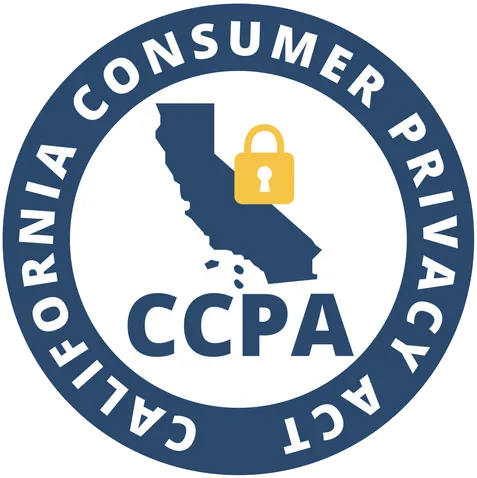Freelancing is no longer limited to creatives. More companies are hiring freelance recruiters to fill roles quickly and flexibly. In fact, there were 76.4 million freelancers in America in 2024, with the number projected to grow even more this year.[1] Nearly half of U.S. CEOs plan to increase their use of freelance talent, and recruiters are in high demand as businesses face record-breaking talent shortages.[2] If you’re seeking more control over your schedule, client selection, and work environment, and potentially earn as much, or more than in traditional roles, this freelance recruiter guide will show you how to get started. For example, freelance recruiters earn an average of $14.42/hour (~$30,000/year for a 40-hour week), with top earners in tech-focused markets reaching up to $15.38/hour or $21,000 per placement for a $70,000 role.[3] Let’s get right to it!
What is a Freelance Recruiter?
A freelance recruiter helps companies find and hire the right talent. Unlike in-house recruiters who work for one company, freelancers work for themselves or small agencies and can take on multiple clients across different industries. Their main responsibilities include:
- Writing job descriptions,
- Sourcing and screening candidates,
- Scheduling interviews, and
- Helping negotiate job offers.
To thrive as a freelance recruiter, you’ll need to build a strong foundation in several key areas:
Industry and Market Expertise
- Market knowledge: Understand which industries and roles are in demand and how to tailor your approach to each.
- Industry awareness: Stay up to date on recruiting trends, emerging skills, and shifting job market conditions.
Talent Acquisition and Evaluation
- Resume screening: Learn how to quickly identify top candidates by spotting relevant skills and red flags.
- Interviewing: Use structured, effective techniques to assess candidates’ fit for a role.
- Sourcing talent: Become skilled in using job boards, social media, and recruiting software to find and engage candidates.
Client and Candidate Relationship Management
- Networking: Build and maintain relationships through industry events, online communities, and referrals.
- Negotiation: Help bridge the gap between candidates and clients when it comes to salary, benefits, and terms.
Branding and Promotion
- Personal branding: Create a credible online presence—especially on LinkedIn—to establish trust and attract both clients and candidates.
- Marketing: Promote your services and job openings effectively through social media, email, and digital advertising.
Compliance and Professional Standards
- Legal understanding: Know the basics of employment law, equal opportunity regulations, and ethical hiring practices.
Create Your Freelance Recruiting Business Plan
To be a successful freelance recruiter, apart from having great networks and knowledge for sourcing candidates, you need a clear and actionable business plan. A well-structured business plan helps you define your services, identify your target market, manage finances, and build a growth roadmap. Here’s how to approach it step by step:
1. Define Your Niche and Services
Start by narrowing down your focus. Specializing in a specific industry or job function helps you stand out and build expertise.
- Niche selection: Choose industries where you have experience, contacts, or high demand (e.g., tech startups, healthcare, sales). For instance, if you previously worked in hospital HR, focusing on healthcare recruiting allows you to leverage existing knowledge and networks.
- Service offerings: Outline what you provide — full-cycle recruiting, sourcing only, contract hiring, employer branding, etc.
- Value proposition: Clarify why clients should choose you. Highlight efficiency, access to top talent, or unique hiring methodologies.
2. Market Research and Target Client Profile
Understand the market you're entering. Who needs your services, and what are they willing to pay?
- Ideal client: Define whether you want to work with startups, SMEs, or enterprise clients.
- Demand trends: Use job boards and LinkedIn to analyze what roles are in demand. For example, in tech recruiting, note the high demand with over 100,000 open roles in the U.S. alone.
- Competitive analysis: Research other freelance recruiters. Identify their strengths, weaknesses, and pricing to position yourself effectively.
3. Business Model and Pricing Strategy
Establish how you'll charge for your services:
- Pricing models: Consider options like:
- a) Contingency (payment upon successful hire)
- b) Retainer (fixed monthly fee)
- c) Hourly or project-based
- Fee structure: Typical freelance recruiter fees range from 15%–25% of a candidate’s first-year salary, but can vary by role complexity and location.
- Upselling opportunities: Consider offering value-added services like onboarding support or diversity sourcing.
4. Marketing and Client Acquisition Plan
Your business plan should include strategies to build visibility and attract clients.
- Establish Online Presence: Create a professional website, optimize your LinkedIn profile, and share insights or candidate success stories.
- Outreach tactics: Use cold outreach, referrals, and freelance platforms (e.g., Upwork, Toptal) to connect with potential clients.
- Content marketing: Establish yourself as a thought leader with blog posts, industry guides, or newsletters.
5. Operational Plan and Tools
Detail the tools and systems you’ll use to manage your work efficiently.
- Applicant tracking system (ATS): Choose an applicant tracking system like Manatal.
- CRM tools: Keep track of client interactions and sales pipelines.
- Sourcing platforms: Include access to LinkedIn Recruiter Lite, job boards, or Boolean search tools.
- Contracts and invoicing: Use templates and accounting tools (like QuickBooks or FreshBooks) to manage client agreements and payments.
{{cta}}
6. Financial Projections and Budgeting
Plan your income goals and track expenses to stay profitable.
- Startup costs: Estimate software, marketing, and legal fees.
- Monthly expenses: Include subscriptions, taxes, and overhead.
- Revenue forecasts: Base this on your expected number of placements or hours billed per month.
- Break-even point: Calculate how many clients or placements you need to cover your costs.
7. Legal and Administrative Setup
Ensure your business is legally sound and ready to scale.
- Business registration: Decide on a legal structure (sole proprietorship, LLC, etc.).
- Contracts: Draft service agreements and NDAs to protect both parties.
- Insurance: Consider professional liability or general business insurance.
- Compliance: Stay informed about data privacy regulations (e.g., GDPR) and fair hiring practices.
Example Business Plan Outline:
- Executive Summary: Brief overview of your goals and services.
- Market Analysis: Research demand in your niche (e.g., "Tech recruiting has over 100,000 open U.S. roles").
- Services Offered: Full-cycle recruiting, sourcing, etc.
- Marketing Strategy: LinkedIn posts, cold emails, etc.
- Financial Projections: Target 5 placements/month at 20% of $60,000 salary = $60,000/year.
Closing Clients: From Discovery Call to Contract
Once a potential client expresses interest, the goal is to convert that lead into a signed agreement with transparent terms. Here’s a step-by-step approach:
1. Run a Discovery Call
Use a simple call script to understand the client’s hiring needs.
Ask:
- “What roles are you currently hiring for?”
- “What’s your biggest hiring challenge right now?”
- “Have you worked with external recruiters before? What went well or didn’t?”
This sets the stage for offering tailored solutions.
2. Present Your Pricing Clearly
Offer two or three pricing models to give the client options.
Example Models:
- Contingency: Pay only when a candidate is hired.
- Retainer: Fixed monthly fee for ongoing recruiting support.
- Flat fee: One-time payment per role.
Include a simple rate card or visual chart that compares these options. Explain the pros and cons of each based on the client’s needs.
3. Handle Objections Professionally
Clients may hesitate due to budget or past experiences. Address this by providing proof of success:
- Share speed-to-hire metrics or past placements.
- Mention a guarantee (e.g., “Free replacement if the hire leaves within 60 days”).
- Offer references or testimonials from previous clients.
4. Send a Professional Proposal
Summarize the agreement in a formal proposal using tools like:
- Notion or Google Docs for simple proposals.
- Docsend for trackable PDFs.
- Canva for visually polished pitch decks.
Include:
- Scope of work (roles, industries, services)
- Timeline and milestones
- Payment terms
- Replacement/refund policy
5. Close with a Signed Contract
Use e-signature tools like PandaDoc, HelloSign, or Adobe Sign to finalize the agreement.
Always confirm the contract is signed before beginning any sourcing work.
Developing Candidate Relationships and Pools
Your reputation is only as strong as the candidates you consistently engage.
1. Create a Candidate Database
- Use tools like Airtable, Notion, or a simple ATS (e.g., Manatal, Recruiterflow).
- Tag candidates by:
- a) Role type
- b) Experience level
- c) Industry
- d) Willingness to relocate
2. Run Regular Check-ins
- Create a monthly or quarterly cadence for candidate touchpoints.
- Templates you can use:
- a) “Just checking in — are you still open to new roles?”
- b) “I came across a role that might fit your background — open to hear more?”
3. Offer Value, Not Just Jobs
- Share interview tips, resume feedback, or salary benchmarks.
- Use email newsletters or LinkedIn posts to build trust.
4. Ask for Referrals
- After helping a candidate, ask, “Know anyone in your network looking for similar roles? I’d love to connect.”
Build Recruiting Process and Find Candidates
You need a repeatable system to efficiently source and present top talent.
1. Set Up a Standard Hiring Workflow
- Define these stages: Intake → Sourcing → Screening → Submission → Feedback
- Use templates for:
- a) Intake questionnaires
- b) Screening scorecards
- c) Candidate submission emails
2. Source Smartly
- Use Boolean search on LinkedIn, Google, or GitHub.
- Tools to help:
- a) LinkedIn Recruiter Lite
- b) Hiretual, Apollo, or ContactOut for contact info
- c) Job boards like AngelList, Wellfound, Dice for niche roles
3. Screen Efficiently
- Build a 20–30 min phone screen format:
- a) Work history
- b) Key skills
- c) Soft skills/communication
- d) Salary expectations
- e) Notice period
4. Send High-Quality Submissions
- Include a short summary + resume + key points (salary, location, availability).
- Example: “Jane Doe is a Sr. Frontend Engineer with 5+ years at Shopify, React expert, available in 2 weeks, expecting $90K base.”
Managing Freelance Recruiter Challenges
Being a solo recruiter brings unique hurdles. Here's how to tackle them.
1. Inconsistent Workload
- Solution: Always block time weekly for prospecting — even if you're busy.
- Use a simple lead tracker in a spreadsheet or Notion.
2. Client Delays or Ghosting
- Solution: Set expectations early:
- a) Weekly status updates
- b) Response SLA (e.g., 48 hours)
- c) Built-in fees for hold periods if needed
3. Difficult or Vague Job Descriptions
- Solution: Use a kickoff call template to clarify:
- a) Key responsibilities
- b) Must-haves vs nice-to-haves
- c) Culture fit cues
- d) Interview structure
4. Rejection Burnout
- Solution: Keep a long-term view — not every pitch will land.
- Review past wins, refine your outreach strategy, and connect with other freelance recruiters for support.
5. Time Management
- Solution: Batch similar tasks (e.g., sourcing in the morning, client calls in the afternoon).
- Use time trackers like Toggl or Clockify to spot time drains.
Conclusion
Embarking on a journey as a freelance recruiter in today's technology-driven market can be both exciting and rewarding. However, as you pursue your goals with autonomy, it's important to ensure that you are well-prepared for the challenges ahead. Equipping yourself with the right tools, from Applicant Tracking Systems to communication software, will significantly bolster your efficiency in the recruitment process. Remember, the key to thriving as an independent recruiter lies not only in your skills and strategies but also in your ability to adapt and utilize the modern tools available to help you navigate the recruitment landscape confidently.
Frequently Asked Questions
Q: How does freelance recruiting differ from working at an agency or in-house?
A: Freelance recruiting is distinct from agency or in-house recruiting mainly due to the independence and responsibility it demands, as freelancers select their clients and manage their business operations. In contrast, agency recruiters work within a team using company resources for multiple clients, while in-house recruiters focus solely on a single organization's hiring needs. These settings differ in stability and demands, with freelance recruiting offering autonomy but also posing entrepreneurial challenges.
Q: How do freelance recruiters determine their rates or fees?
A: Freelance recruiters set their rates based on their experience, industry expertise, and the difficulty of filling a role. Experienced recruiters with specialized expertise can charge more. They consider market demand and competition to ensure competitive pricing. Filling hard-to-fill roles may justify higher fees due to increased effort. Recruiters might choose pricing models like flat fee, percentage of salary, or hourly rates based on client needs and their strategy, balancing competitive solutions with profitability.
Q: How can a freelance recruiter protect candidate and client confidentiality?
A: Freelance recruiters can ensure candidate and client confidentiality by establishing clear confidentiality agreements, using secure communication channels, and adhering to strict policies of non-disclosure. Regular training on data privacy and compliance with legal regulations like GDPR enhance protection measures. Limiting access to sensitive information and monitoring it continuously helps prevent data breaches.
Q: What legal and contractual considerations should freelance recruiters be aware of when working with clients?
A: Freelance recruiters should ensure compliance and protect their interests by establishing clear written contracts outlining scope, fees, and confidentiality. They must follow employment laws, maintain data privacy, and consider NDAs. Awareness of exclusivity and non-compete clauses is important to manage obligations and multiple clients. Addressing these legalities helps build trust and ensures smooth operations.
Q: How can freelance recruiters differentiate themselves in a competitive market?
A: Freelance recruiters can stand out in the competitive market by developing a unique personal brand, specializing in niche areas, and providing exceptional candidate experiences. They can become indispensable by building deep industry knowledge, using innovative sourcing techniques, and staying updated with trends and AI recruitment tools. Additionally, offering personalized service, transparency, and open communication builds trust. Maintaining a strong online presence and participating in professional communities helps enhance their visibility and reputation as thought leaders.
Citations:





.png)






















.webp)

.webp)

.webp)
